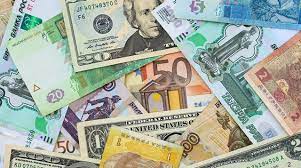Forex Reserve of India refers to the foreign exchange reserves held by the Reserve Bank of India (RBI). These reserves include foreign currency assets, gold reserves, special drawing rights (SDRs), and reserve tranche position (RTP) with the International Monetary Fund (IMF). In this article, we will discuss the significance, composition, and management of Forex Reserves of India.

Table of Contents
Significance of Forex Reserves
Forex Reserve of India play a crucial role in maintaining the stability of a country’s economy. They act as a cushion against external shocks and are used to finance the country’s imports and other international obligations. Moreover, a country with high Forex reserves is considered creditworthy, which enhances its reputation in the global financial market. For India, which is an import-dependent economy, Forex reserves are vital for maintaining its economic stability.
Composition of Forex Reserves of India
As of March 2021, India’s Forex reserves stood at $584.55 billion. The composition of Forex reserves can be broadly divided into four categories:
Foreign Currency Assets (FCA): FCA is the largest component of India’s Forex reserves, accounting for around 87% of the total reserves. It includes deposits and securities denominated in foreign currencies, which are held in various foreign central banks.
Gold Reserves: Gold reserves are the second-largest component of India’s Forex reserves, accounting for around 6.5% of the total reserves. India is one of the largest consumers of gold globally and has been increasing its gold reserves over the years.
Special Drawing Rights (SDRs): SDRs are a form of reserve assets created by the IMF to supplement its member countries’ official reserves. India’s SDR holdings account for around 1.4% of the total Forex reserves.
Reserve Tranche Position (RTP): RTP is the last component of India’s Forex reserves, accounting for around 1.2% of the total reserves. It refers to the reserve amount that a country keeps with the IMF.
Management of Forex Reserve of India
The RBI manages India’s Forex reserves. The central bank uses various tools and strategies to maintain the Forex reserves at an optimal level. Some of these strategies are:
Exchange rate management: The RBI intervenes in the foreign exchange market to maintain the exchange rate of the Indian rupee. It buys or sells foreign currency to stabilize the exchange rate.
Diversification of assets: The RBI diversifies its Forex reserves across different asset classes and currencies to reduce the risk of losses. It also invests in high-quality securities to ensure the safety and liquidity of the reserves.
Monitoring global economic and financial developments: The RBI closely monitors global economic and financial developments to anticipate any potential risks to the Forex reserves. It takes preemptive measures to mitigate these risks.
Conclusion
Forex reserves are essential for maintaining the stability of India’s economy. India has been able to increase its Forex reserves over the years, which has enhanced its reputation in the global financial market. The RBI manages India’s Forex reserves using various strategies and tools to ensure their safety and liquidity. Overall, Forex reserves play a crucial role in safeguarding India’s economic stability and growth.
Important Links